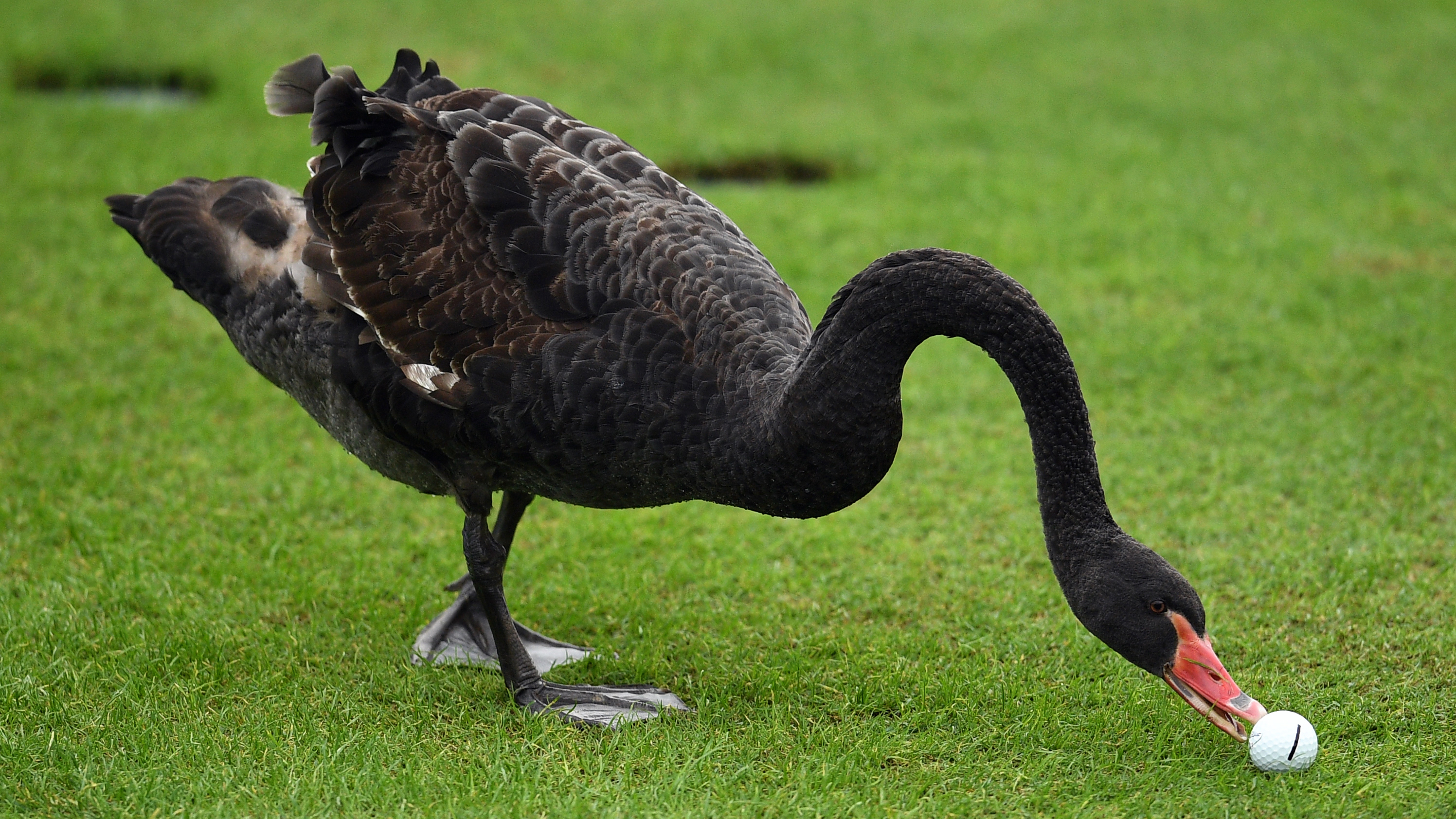What Happens If An Animal Moves Your Ball On The Golf Course?
Whether it's a pesky seagull, a curious swan or an inquisitive dog, how do the Rules of Golf deal with an animal moving your ball out on the course?


You may have never had this happen to you - or at least never seen it happen - but it can and does occur on golf courses around the world where the fairways are shared with local wildlife and other animals that occasionally take more than a passing interest in golf balls.

Sometimes animals get a little too interested in our golf balls
Thankfully, this is actually quite a straightforward Rules scenario. Animals or birds are considered outside influences when it comes to the Rules of Golf, with the definitions section describing an ‘outside influence’ as:
Any of these people or things that can affect what happens to a player’s ball or equipment or to the course:
• Any person (including another player), except the player or their caddie or the player’s partner or opponent or any of their caddies,
• Any animal,
• Any natural or artificial object or anything else (including another ball in motion),
except for natural forces, and
• Artificially propelled air and water, such as from a fan or irrigation system.
Our focus here is animals, whether it’s a seagull picking up a ball and making off with it, as happened to Phil Mickelson in the 2019 US Open, or a playful dog deciding it's the perfect time for a game of fetch, as happened to Paul Casey in the 2012 Alfred Dunhill Links Championship at Kingsbarns.

Seagulls sometimes find golf balls an attractive proposition on coastal courses in particular
When a ball is moved by an outside influence, Rule 9.6 covers what to do next. First, it needs to be known or virtually certain that an outside influence has moved the ball and that was definitely the case for both Mickelson and Casey.
Known or virtually certain means more than just probable or possible; it means that either there is conclusive evidence that it happened, or, from all reasonable available information, it is at least 95 per cent likely that the event in question happened.
Subscribe to the Golf Monthly newsletter to stay up to date with all the latest tour news, equipment news, reviews, head-to-heads and buyer’s guides from our team of experienced experts.
If this is the case, there is no penalty to the player and the ball must be replaced. If the exact spot isn’t known, it must be estimated (Rule 14.2). The player can also clean the ball before replacing it. Mickelson didn’t know the exact spot, but with help from a spectator and official he was able to determine the original location and replace the ball.

Paul Casey looks relieved as the dog finally releases his golf ball at Kingsbarns
But what happens if the ball can’t be easily retrieved – perhaps a seagull has dropped it in the sea or a pond or a dog has disappeared with the ball in its mouth. Rule 14.2a has the answer here, for, while the original ball must be used when replacing a ball, there is an Exception that allows another ball to be used when the original ball cannot be recovered with reasonable effort and in a few seconds, so long as the player did not deliberately cause the ball to become unrecoverable.
Another Exception under Rule 14.2a would also allow the original ball to be substituted if it had become cut or cracked as a result of the unwanted animal interference (Rule 4.2c), but not if it had merely become scratched or scraped or its paint were only damaged or discoloured.
So, if you see an animal move your golf ball or make off with it, don’t panic – just remember it’s an outside influence and follow the procedures outlined in Rules 9.6 and 14.2 and you’ll soon be on your way again penalty-free even if you might be a Titleist Pro V1 down.

Jeremy Ellwood has worked in the golf industry since 1993 and for Golf Monthly since 2002 when he started out as equipment editor. He is now a freelance journalist writing mainly for Golf Monthly. He is an expert on the Rules of Golf having qualified through an R&A course to become a golf referee. He is a senior panelist for Golf Monthly's Top 100 UK & Ireland Course Rankings and has played all of the Top 100 plus 91 of the Next 100, making him well-qualified when it comes to assessing and comparing our premier golf courses. He has now played 1,000 golf courses worldwide in 35 countries, from the humblest of nine-holers in the Scottish Highlands to the very grandest of international golf resorts. He reached the 1,000 mark on his 60th birthday in October 2023 on Vale do Lobo's Ocean course. Put him on a links course anywhere and he will be blissfully content.
Jezz can be contacted via Twitter - @JezzEllwoodGolf
Jeremy is currently playing...
Driver: Ping G425 LST 10.5˚ (draw setting), Mitsubishi Tensei AV Orange 55 S shaft
3 wood: Srixon ZX, EvenFlow Riptide 6.0 S 50g shaft
Hybrid: Ping G425 17˚, Mitsubishi Tensei CK Pro Orange 80 S shaft
Irons 3- to 8-iron: Ping i525, True Temper Dynamic Gold 105 R300 shafts
Irons 9-iron and PW: Honma TWorld TW747Vx, Nippon NS Pro regular shaft
Wedges: Ping Glide 4.0 50˚ and 54˚, 12˚ bounce, True Temper Dynamic Gold 105 R300 shafts
Putter: Kramski HPP 325
Ball: Any premium ball I can find in a charity shop or similar (or out on the course!)